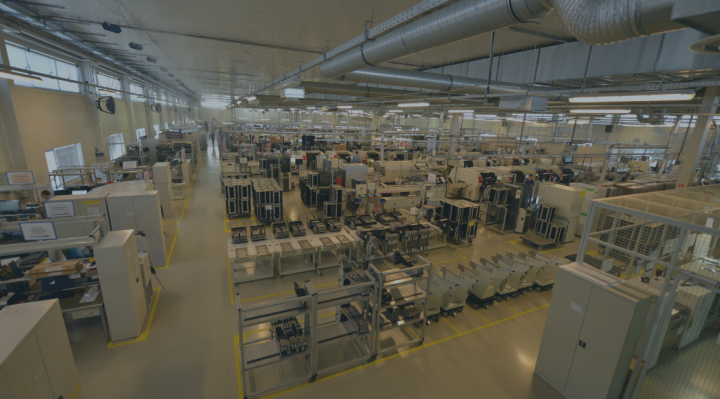The electronics manufacturing sector is one of the fastest growing industries on both global markets and in Poland. On the one hand, this is caused by the dynamic and advanced development of technology, and on the other, by the ongoing automation of enterprises in various industry sectors, which are becoming increasingly dependent on the supply of electronic components.
Electronics has become indispensable in many areas - starting from consumer electronics in every home, to specialised solutions supporting various industries, to professional industrial applications. The electronization of our lives will intensify, and subsequent areas will be increasingly filled with the products of electronics.
Although the development of the electronics manufacturing industry, including the contract manufacturing, will continue, it does not mean that this sector of the economy is not facing specific challenges. Below, we discuss the key ones, facing EMS in Poland.
Rising employee wages
Despite the gradually growing salaries of employees, Poland still remains an attractive location in terms of employee costs compared to the countries of Western Europe. Polish workers are well-qualified, and at the same time earn much less than corresponding specialists in the Old European Union. The trend of cost advantage for employers is likely to continue in the coming years because wages in Poland have been increasing one percentage point faster than the consumer price index (compound annual growth rate, 2009-2013).
As the cost advantage will decrease over time (making salaries closer to those in Western Europe), the Polish contract electronics manufacturer may benefit from offering added value, thanks to highly qualified and experienced employees. This will require continuous improvement of qualifications, adapting the educational opportunities to business needs, increasing innovation, strengthening the brands of individual EMS in Poland and introducing optimal management practices.
Ongoing automation of PCB assembly
Competitive employee wages are not the only benefit offered by Poland and Polish contract electronics manufacturers. The domestic market is evolving quickly. Suppliers who focus on assembly and price per element start losing the customers of their services. Customer requirements are growing, slowly becoming a standard, and one of them is the ongoing automation of the manufacturing process.
For EMS in Poland, keeping up with the pace in technological development is less a challenge related to the awareness of changes and the need for continuous development, and more in connection with the capital and knowledge built up over years within the organization.
The under-funded electronics industry, represented mainly by small and medium-sized enterprises, used subsidies from the EU funds to keep up with the market requirements - Poland remains one of the leaders of the Member States when it comes to an effective use of granted aid - however, Community grants are coming to an end, which exhausts one of the important methods of financing for development. Another equally important source of development subsidising are investments of foreign partners that support the growth of their Polish partners. Thanks to this, the knowledge, skills and experience of EMS in Poland have been growing, making it possible to carry out increasingly advanced projects on partnership terms.
Innovations - Industry 4.0
It is predicted that one of the ways to increase margins in the outsourcing of assembly and test (OSAT) industry is the implementation of new technologies and solutions under the concept of Industry 4.0. The crucial benefit that they can bring to the OSAT industry is the reduction in the number of employees thanks to automation and improvement of the supply chain.
The OSAT industry is one of the biggest employers in the electronics industry - because of its large demand for manual operations it was developed to the greatest extent in Asia, where wages were much lower compared to other parts of the world. However, the current trends are changing - wages are rising in response to the expectations of Asian employees.
A number of improvements can be made thanks to automation and other technical solutions related to Industry 4.0, such as the Industrial Internet of Things or the broader use of artificial intelligence-based systems. These include better predictive maintenance, more effective optimisation of the efficiency of machinery and production lines and the use of collaborative robots for automation of process stages that were previously unsuitable for automating.
According to predictions of Roland Berger analysts, Industry 4.0 technologies in the electronics assembly sector might contribute to an increase in the return on capital employed (ROCE), which shows the efficiency and profitability of investments involving entrepreneur's constant capital, by up to 20% and 6% of return of investment and operating profit respectively.
Mergers and acquisitions
Despite the continuous development, EMS in Poland are mainly small and medium-sized enterprises, predominantly existing on the market for one generation. On the one hand, this means considerable competitiveness in the EMS market, and on the other, it raises a number of problems.
Dynamic, but small and fragmented companies are just building their capital, so they are easy targets for acquisition. A small contract manufacturer of electronics loses to the concentration of the market in contact with large business - large and well-funded foreign enterprises have funds sufficient to take over smaller operators on the market. The lack of succession is equally important: when the founder and owner of a company withdraws from their business, the company loses its main drive wheel, becoming an easy target for takeover or gradually goes down due to gradual deterioration in service quality.
Demography
Like in most developed countries, the Polish economy is facing demographic challenges. They may lead to the inhibition of the current growth model as a result of unfavourable demographic conditions combined with low labour productivity and ineffectiveness of the labour market.
In the face of the pandemic crisis, Poland has coped perfectly with one of its previous issues, the source of ineffectiveness on the labour market, which was a relatively low professional activity rate in the previous years. In the last quarter of 2020, the employment rate in the group of professionally active people (18 years old to retirement age) reached 75.6%. However, such a high result does not change the fact that the imbalance in the labour market will increase due to the low birth rate and higher longevity, which is characteristic of the demographic crisis observed also in other European countries.
Since the beginning of the 1990s, the fertility rate in Poland (the average number of children born by a woman during her life) has been decreasing and was 1.378 in 2020. This is the lowest result since 2016, when the rate was 1.357. This situation results in the ageing of population and, at the same time, a shrinking workforce. This requires significant labour market reforms to improve balance of migration, among others. Currently, it is negative - more employees are leaving than coming to Poland.






